Entre le végétarisme, le véganisme et le végétalisme, on retrouve également le flexitarisme. Avec toutes les pratiques alimentaires qui existent aujourd’hui, il peut être facile de s’y perdre. C’est pourquoi on vous aide à démêler le régime alimentaire flexitarien, le tout dernier mode de consommation popularisé. Celui-ci compte de plus en plus d’adeptes partout à travers le monde.
Le flexitarisme, c’est quoi ?
D’abord, répondons à la fameuse question que plusieurs se posent. Comme son nom l’indique, les flexitariens sont souples dans leur alimentation. Ils tentent de réduire et de limiter leur consommation de viande et de poisson. Contrairement aux végétaliens ou aux végétariens qui arrêtent complètement de manger de la viande et qui éliminent plusieurs aliments de leur quotidien, le flexitarisme n’en proscrit aucun. Toutefois, dans ce type de régime alimentaire, une consommation riche en fruits et légumes est encouragée et bien sûr, les produits transformés sont écartés.
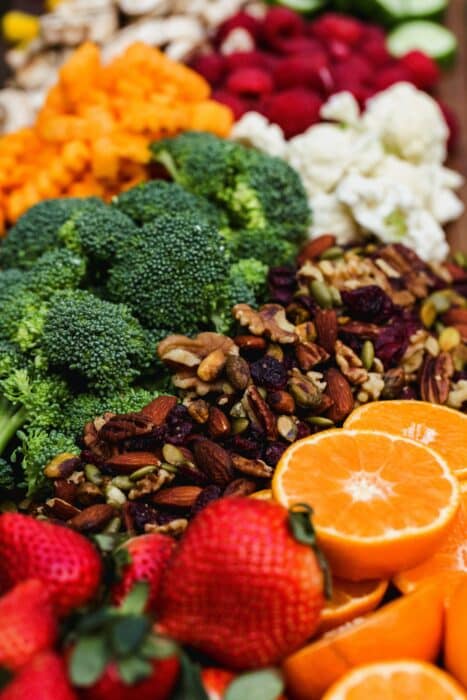
Pourquoi pratique-t-on le flexitarisme ?
Certaines personnes ne sont pas nécessairement prêtes à prendre le virage végétarien, végétalien ou vegan parce qu’il peut sembler très strict, mais elles désirent tout de même faire de petits gestes significatifs pour l’environnement, les animaux et leur santé.
Le flexitarisme se concentre davantage sur les aliments de qualité. Lorsque de la viande est consommée, elle est achetée chez le boucher du coin et elle est issue d’élevage sain ou bio. Les flexitariens sont consciencieux. Ils savent qu’en plus des questions éthiques, les gros élevages de bétail causent des problèmes environnementaux tels que les émissions de gaz à effet de serre, la déforestation, un grand apport en eau, etc.
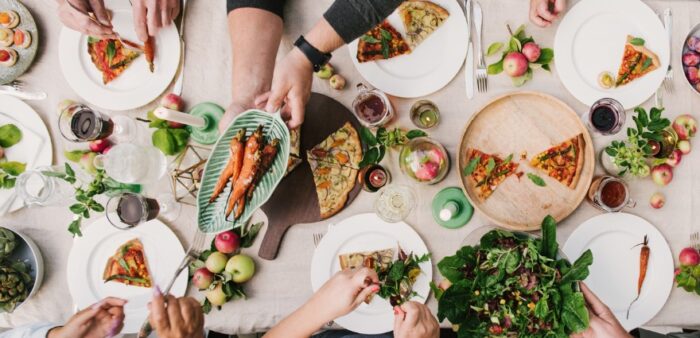
Débuter le flexitarisme
Toutes ces informations sont très utiles, mais si tu veux vraiment te mettre au flexitarisme, comment faire ?
- Réduire ta consommation de viande et de poisson (idéalement à une à deux fois par semaine)
- Acheter des produits avec le moins d’emballage possible
- Se concentrer sur des produits de qualité (biologiques, peu transformés, etc.)
- Augmenter ta consommation de fruits, de légumes et de céréales
- Consommer des produits locaux
Tu peux débuter ta transition doucement et ajuster ta consommation au fil des semaines. Tu verras ; le changement se fait plutôt doucement. N’oublie pas que l’équilibre est le mot d’ordre du flexitarisme.
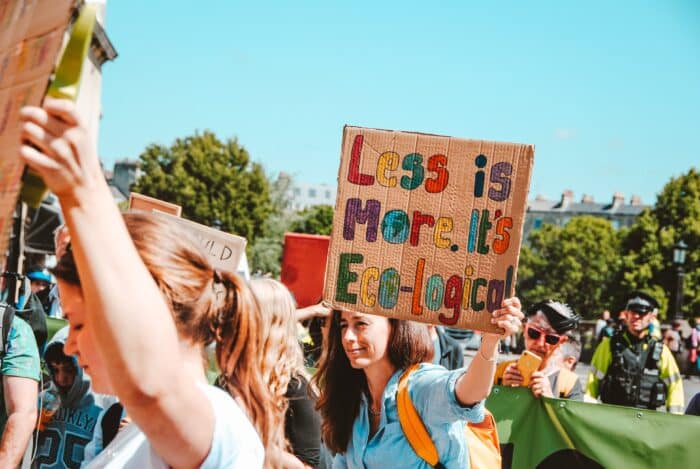
3 mythes à déconstruire sur le flexitarisme
Être flexitarien, ça coûte cher
Au contraire, ce mode de consommation, dans certains cas, réduit considérablement la facture de l’épicerie. Acheter des produits biologiques et de la viande issue d’élevage sain n’est pas tellement plus dispendieux. En plus, si tu achetais autrefois de la viande pour tous tes repas de la semaine, une partie de ce montant épargné te servira maintenant à acheter tes produits locaux chez de petits marchands. Il faut bien entendu planifier son budget, comme c’est le cas avec n’importe quel type d’alimentation.
Être flexitarien, c’est pour se déculpabiliser de ne pas être vegan
Être vegan, c’est tout un mode de vie et il est possible de le faire progressivement. Il y a des étapes à suivre et le flexitarisme s’imbrique bien dans celles-ci. Pour certaines personnes, c’est donc un pas de plus vers le véganisme ou le végétarisme.
Pour d’autres, il n’est pas question de mettre la consommation de viande complètement de côté ! Toutefois, ces personnes veulent faire leur part pour l’environnement, les animaux et leur santé. Ce virage fait partie des petits gestes simples qui auront un grand impact sur notre planète à long terme.
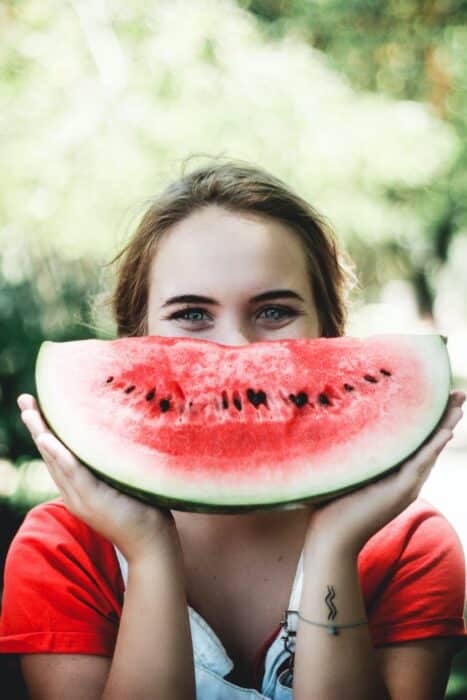
Être flexitarien n’apporte pas assez de nutriments au corps
Quel mythe ! D’ailleurs, beaucoup d’athlètes d’excellence ont eu la chance de le démentir dans les dernières années. Plusieurs d’entre eux se tournent désormais vers le flexitarisme dans le but d’avoir une alimentation équilibrée et de consommer des produits sains pour leur corps (leur outil de travail). En effet, les nutriments présents dans la viande peuvent être trouvés dans d’autres aliments. La clé est de manger diversifié, d’essayer de nouvelles recettes et de découvrir des ingrédients.
Bref, le flexitarisme, c’est un régime alimentaire assez accessible pour tous ceux qui ne désirent pas faire des changements drastiques, mais qui veulent tout de même faire leur part écologique et pour les animaux et leur santé.
Nouvelle année veut dire nouvelles résolutions ! Et si celles-ci incluent un changement au niveau de ton assiette, tu dois certainement planifier tes nouvelles habitudes pour que celles-ci perdurent. Que tu le fasses pour des raisons de santé, écologiques ou éthiques, il est important d’avoir une assiette équilibrée et de cuisiner avec plaisir.
Voici nos 4 conseils pour réduire ta consommation de produits d’origine animale :
1- Fixer une journée par semaine pour les repas végé
Inutile de remplir ton frigo de tofu et de tempeh, si tu n’aimes pas ça ou que tu n’en as jamais consommé. Mieux vaut apporter des changements graduels à ton alimentation, plutôt que de frustrer ton corps avec des changements drastiques.
Pour ceci, tu peux commencer par manger végé seulement une fois par semaine.
À titre d’exemple, le mouvement « lundi sans viande » a eu beaucoup de succès à travers le monde et a aidé plusieurs personnes à faire graduellement leur transition vers une alimentation végéta*ienne.
2- Favoriser les protéines végétales
Certaines personnes pensent qu’il faut compenser les protéines animales avec des protéines végétales en poudre (généralement dispendieuses). Et pourtant, ces composés sont plus accessibles que ce que l’on croit. On les trouve dans les légumineuses, le tofu, le tempeh, le seitan et la protéine végétale texturée (PVT).
Si tu as du mal à comprendre la signification de ces ingrédients, sache que nous sommes tous passés par là ! Pour te familiariser avec le jargon de l’alimentation végétalienne, nous t’invitons à lire notre article sur les sources de protéines végétales.

3- Essayer les produits de substituts
Du fauxmage, des saucisses végétaliennes, des boulettes avec des légumes ou encore de la fausse viande hachée, tu ne manqueras de rien pour réinventer de meilleures recettes version végé : lasagnes à la PVT texturée, pizza 4 fauxmages, hot dog aux saucisses de blé, pâté chinois au haché végé et bien plus !
De plus, les substituts sont généralement faciles à préparer et bien assaisonnés. De quoi gagner du temps lors des journées chargées tout en éprouvant du plaisir.
Envie de magasiner pour des produits qui te feront aimer la cuisine à base de plantes ? Jetteun coup d’œil à nos articles !
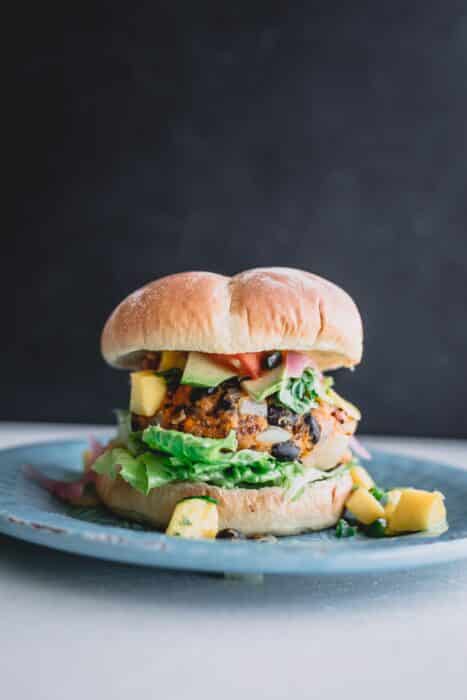
4- Tester de nouvelles recettes
Rien de mieux que de briser la routine avec des recettes que tu n’as jamais essayées avant. Tes invités et tes papilles seront sans doute agréablement surpris par les changements que tu apportes à ta table !
Pour trouver de l’inspiration et ne pas trop prendre de risques avec de nouvelles textures et combinaisons de saveurs, tu peux te procurer des livres de cuisine ou simplement t’abonner à des blogues et chaînes YouTube de foodies véganes.
Pour ceci, nous te recommandons les ressources suivantes :
- La chaîne YouTube de La Petite Okara
- Les fameux livres de La Cuisine de Jean Philippe
- Les recettes de Végane, mais pas plate!
- Les recettes de Loounie
- Les livres de Ma Cuisine de Tous Les Jours
- Les recettes de Edgy Veg
- La chaîne YouTube de Liv B
- Les recettes de Hot For Food
- Les recettes de Cheap Lazy Vegan
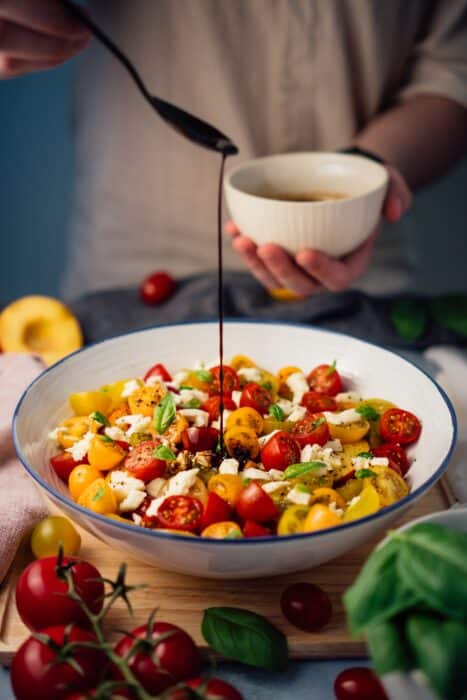
Nous espérons que ces astuces te motiveront à sauter le pas et à apporter de petits changements dans ton assiette. Entre-temps, nous te recommandons de découvrir notre section Gustarium là où tu trouveras une foule de conseils qui t’aideront à réussir ta transition. Enfin, si on t’a convaincu et que nos produits GUSTA finissent dans ton panier d’épicerie, tu peux toujours tester nos succulentes recettes !
Plus que quelques semaines avant Noël et chez GUSTA nous avons déjà sorti nos chandails tricotés pour nous mettre dans l’ambiance. Bien que cette période soit l’occasion idéale pour se réunir en famille et exprimer notre attachement à nos proches, il n’en reste pas moins que c’est aussi la fête de la surconsommation et du gaspillage alimentaire, si l’organisation n’est pas bien réfléchie.
Heureusement, il existe toujours des solutions faciles et économiques pour rendre ton Noël éco responsable et éthique.
Voici 4 façons de passer un Noël responsable :
1. Opter pour des cadeaux vintages
Le vintage c’est la nouvelle mode et cela réjouit la planète ainsi que nos portefeuilles. Une foule de friperies en ligne et de magasins spécialement conçus pour vendre des articles rétro sont disponibles.
Même si certaines pièces de collection peuvent être chères, ces endroits sont LA destination parfaite pour trouver des objets de valeur véhiculant un message symbolique.
Offrir un cadeau vintage à tes proches les ramènera dans une ancienne belle époque !

Voici quelques adresses qui feront ton bonheur :
MONTRÉAL
- Esprit Vintage: 1380 Rue du Pont, Marieville, QC J3M 1G2, Canada
- Kitschy Koo: 1465 rue Bélanger Montréal
- Kitsch à l’os ou pas : 3439 rue Hochelaga Montréal
- Citizen Vintage Mile-End : 5330 Boul. Saint-Laurent, Montréal, QC H2T 1S1, Canada
- EVA B : 2015 Boul. Saint-Laurent, Montréal, QC H2X 2T3, Canada
- Ruse boutique : 5141 Boul. Saint-Laurent, Montréal, QC H2T 1R9, Canada
TORONTO
- Chosen : 1599 Dundas St W, Toronto, ON M6K 1T9, Canada
- 96 Tears Vintage: 1267 Bloor St W, Toronto, ON M6H 1N7, Canada
- The Handwork Department: 1884 Danforth Ave, Toronto, ON M4C 1J4, Canada
VANCOUVER
- F as in Frank Vintage Clothing: 2425 Main St, Vancouver, BC V5T 3E1, Canada
- Woo Vintage Clothing: 4393 Main St, Vancouver, BC V5V 3R1, Canada
- Community Thrift & Vintage FROCK SHOPPE: 311 Carrall St, Vancouver, BC V6B 2J4, Canada
2- Bien choisir son sapin
Plusieurs options s’offrent à toi pour diminuer ton empreinte écologique tout en ayant un petit arbre décoratif de Noël !
Tout d’abord, aux oubliettes les sapins artificiels. Bien qu’ils soient réutilisables, ces derniers sont polluants puisqu’ils sont fabriqués avec du plastique. Ellipsos a réalisé une étude sur le cycle de vie du sapin naturel en le comparant à celui du sapin artificiel. Grande surprise ! Un sapin de Noël artificiel émet à peu près 8,1 kg de CO2 pour sa production et pour son transport, alors qu’un sapin naturel n’émet que 3,1 kg de CO2, soit moins de la moitié de la première option ! De plus, pour rentabiliser l’empreinte carbone d’un sapin artificiel, il faudra l’utiliser pendant 20 ans. On s’entend qu’au bout de 3 ans, ces derniers finissent à la poubelle soit par usure ou simplement pour changer!
Pour un sapin respectueux envers l’environnement, tu peux opter pour un achat local et biologique. Tu peux également le replanter dans ton jardin après les fêtes pour éviter de le jeter.
Les moins capricieux peuvent se contenter d’un sapin dans un pot qui ornera leur maison tout au long de l’année.
Si aucune de ses options ne te semble intéressante, sache qu’il y a également des entreprises qui louent des sapins. Cette option à la fois rentable et écologique permet de limiter le gaspillage des sapins.
Les créatifs quant à eux peuvent se tourner vers la fabrication de leur propre sapin à l’aide d’objets à recycler, de livres, de guirlandes ou de journaux. Il s’agit d’une belle activité à faire en famille afin de divertir les enfants et les inclure dans les préparatifs des fêtes.

3. Emballer ou pas !
Les emballages cadeaux finissent souvent à la poubelle, alors pourquoi le fait-on ? Tout ce qui compte, c’est ce qu’il y a à l’intérieur, non?
Si tu tiens à ce que ton cadeau soit instagrammable pour bien décorer ton sapin de Noël, tu peux toujours opter pour un emballage écolo.
Les emballages en tissu, c’est la tendance de l’année ! En plus, d’être réutilisables, ces emballages sont plus chics !
Voici une vidéo qui t’inspirera lors de ton prochain emballage cadeau:
Le furoshiki : emballage cadeau zéro déchet

4. Moins de viande, plus de légumes !
Tu aimes cuisiner pour tes invités durant cette période de rassemblement ? Le repas, c’est le meilleur moment de Noël : toute la famille se réunit pour partager des mets traditionnels et authentiques. Et pourquoi pas leur faire découvrir quelques-unes de tes recettes végétaliennes?
Pour ceci, tu peux jeter un coup d’œil au livre du chef favoris des végé, La Cuisine de Jean-Philippe : Mes grands classiques véganes.
Tu y trouveras des plats de famille véganisées !
Tu peux aussi toujours opter pour nos alternatives véganes qui te faciliteront les préparatifs : un plateau de fauxmages pour l’apéro, des saucisses végé à l’entrée, du pâté végane à mettre sur tes toasts, etc.

Nous espérons que ces astuces t’aideront à débuter tes résolutions bien avant le mois de janvier. Dès Noël, tu pourras commencer à appliquer tes nouvelles habitudes pour assurer un meilleur avenir pour la planète, un petit geste à la fois.
L’automne, quel beau moment pour aller cueillir des pommes et des citrouilles ! Ce qu’on aime aussi particulièrement, ce sont les journées de cuisine qui s’ensuivent. Chaque année, c’est toujours pareil : on a beaucoup trop de ces fruits et on ne sait plus quoi en faire ! C’est donc le moment idéal pour essayer plusieurs délicieuses recettes végétales à base de pommes et de citrouilles.
Voici donc 7 recettes à base de plantes qui plairont assurément à tes papilles gustatives.
Croustade aux pommes végane
Pas trop original nous diras-tu ? On s’entend pour dire qu’il n’y a rien de comparable à une bonne croustade aux pommes en revenant de ta cueillette. Fondante dans la bouche, c’est probablement l’une des recettes les plus faciles à cuisiner et ça te rappellera tes doux moments d’enfance.
Les ingrédients
Croustillant
- 1 ½ tasse de flocons d’avoine
- 1 ½ tasse de farine tout usage
- ⅔ tasse de cassonade pressée
- ½ cuillère à thé de sel
- ½ tasse de beurre végan ou de margarine
Garniture
- 10 pommes Cortland ou McIntosh, pelées et coupées
- ½ tasse de cassonade pressée
- ½ cuillère à thé de cannelle moulue
Pour voir les instructions, c’est ici.
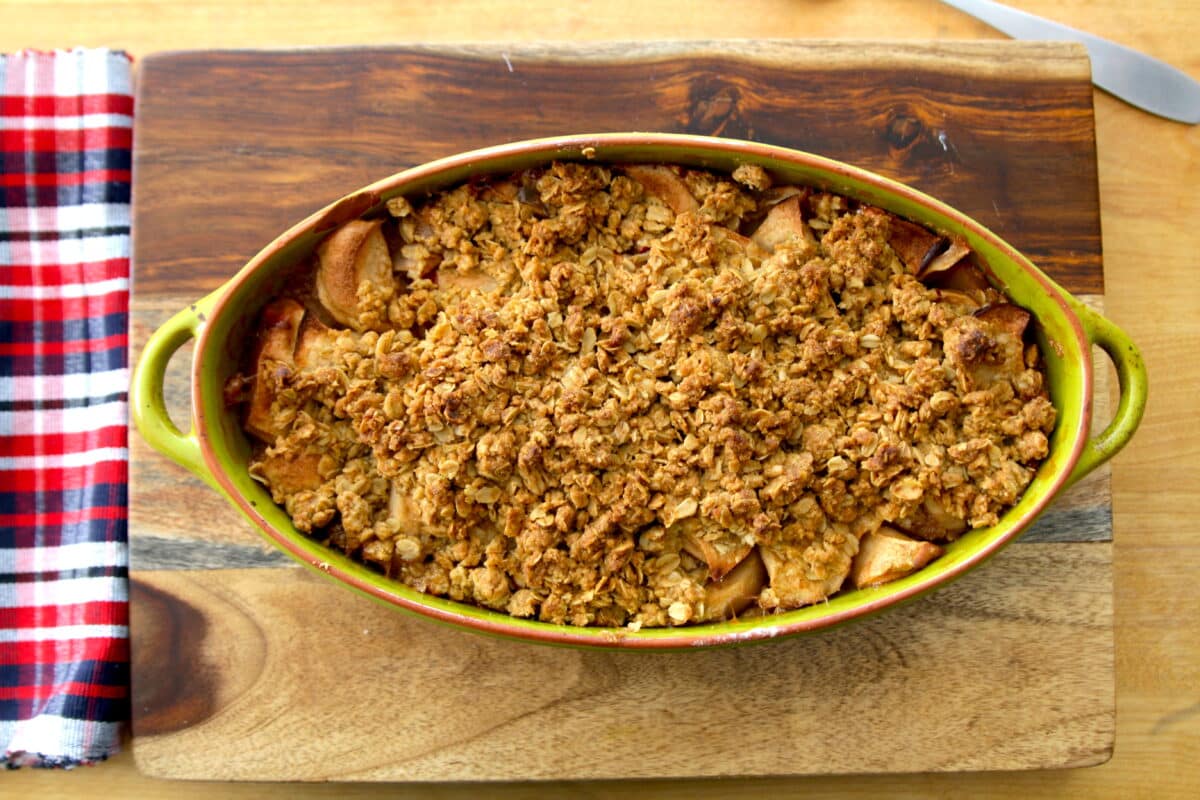
Beurre à la citrouille épicé
Pour faire changement du beurre d’amande, voici une délicieuse alternative à mettre sur tes rôties ou tes pâtisseries le matin. Sucrée à point et trompeuse par son nom, cette recette ne contient même pas de beurre ! On te laisse l’essayer et en juger.
Les ingrédients
- 2 tasses de purée de citrouille (faite maison ou du marché)
- ½ cuillère à soupe d’épices à tarte à la citrouille
- ½ tasse de dattes
- ½ tasse d’eau
- 3 cuillères à soupe de sirop d’érable
- ½ cuillère à thé d’extrait de vanille
- 1 cuillère à soupe de vinaigre de cidre de pomme
- 1 pincée de sel
Pour les instructions, c’est ici.

Gâteau moelleux aux pommes
Ce gâteau est littéralement à tomber par terre ! Sa texture moelleuse et son goût juste assez sucré sont ce que l’on aime par-dessus tout. Cette recette est à cuisiner avec tes personnes préférées lors d’un dimanche pluvieux cet automne.
Les ingrédients
Croustillant
- 1 cuillère à thé de farine de sarrasin
- 3 cuillères à soupe de sirop d’érable
- ½ tasse de noix de Grenoble
Gâteau
- 2 grosses pommes, pelées et coupées
- ¼ tasse de farine de riz
- ¼ tasse de sucre
- 2 oeufs
- 75 ml de lait végétal au choix
- 1 cuillère à soupe de purée d’amandes
- ½ cuillère à thé de cannelle moulue
Pour les instructions, c’est ici.
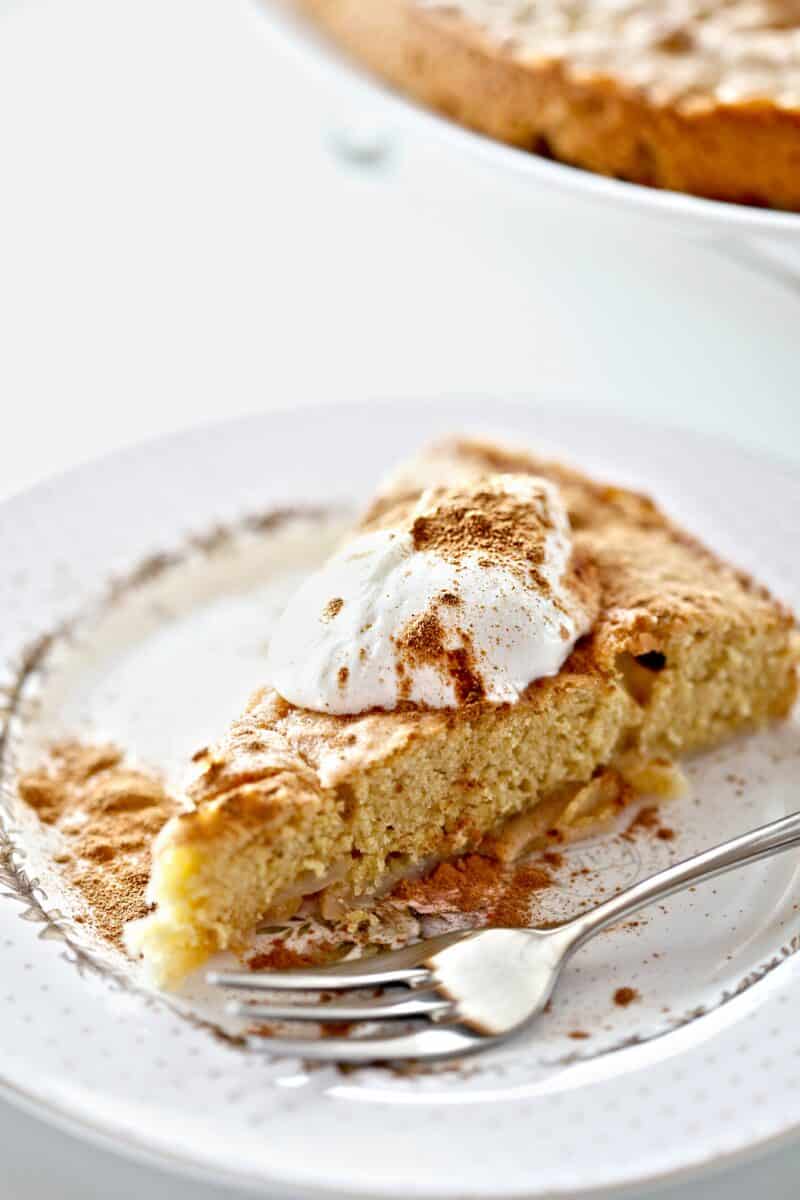
Biscuit citrouille et chocolat
Qu’est-ce qui goûte plus l’automne que la citrouille et les épices ? Ces délicieux biscuits au chocolat et à la citrouille sont non seulement réconfortants, mais ils sont aussi bons pour la santé. Faibles en gras et faits avec des ingrédients naturels, ils font une excellente collation.
Les ingrédients
- 1 cuillère à soupe de graines de lin moulues
- 3 cuillères à soupe d’eau tiède
- ¼ tasse de compote de pommes non-sucrée (tu peux aussi la concocter toi-même)
- ¼ tasse d’huile de canola
- 1 tasse de purée de citrouilles (faite maison ou du marché)
- ½ tasse de sucre
- 1 cuillère à thé d’extrait de vanille pure
- 1 cuillère à thé de bicarbonate de soudre
- 1 cuillère à thé de lait végétal au choix
- 2 cuillères à thé de cannelle bio
- 1 cuillère à thé piment de la Jamaïque ou quatre-épices
- 2 cuillères à thé de poudre à pâte
- ½ cuillère à thé de sel
- 1 tasse de farine de blé entier
- 1 tasse de farine tout usage
- 1 tasse de brisures de chocolat végétalien
Pour les instructions, c’est ici.
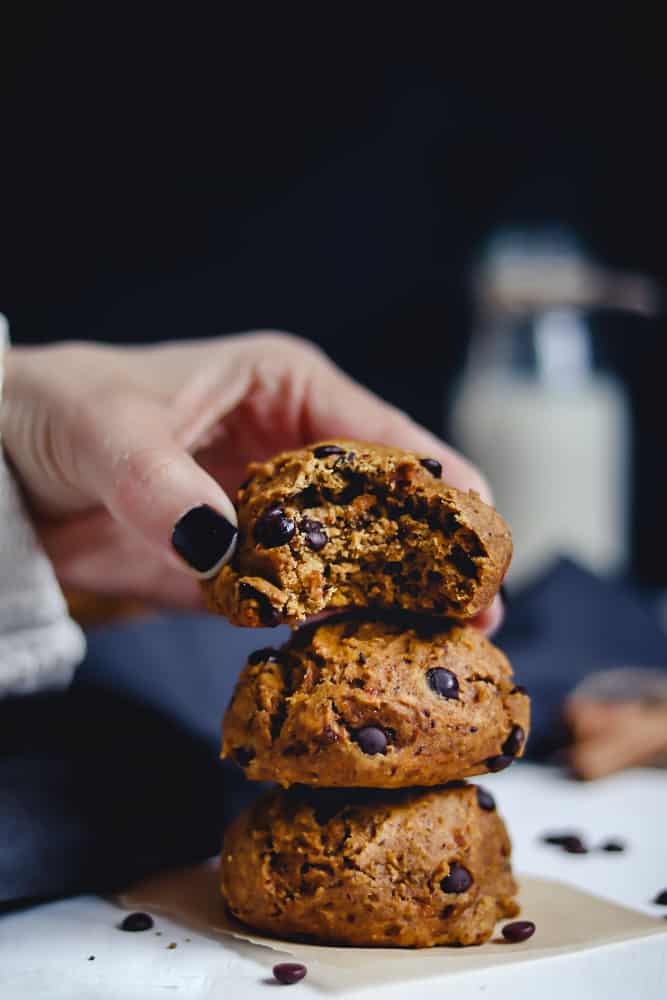
Beignes aux pommes
On ne pouvait certainement pas écrire un article de recettes sans incorporer de délicieux beignets faits maison. Pour un dessert vite fait, bien fait qui requiert très peu d’ingrédients, celui-ci sera ton meilleur ami.
Les ingrédients
- 1 tasse de farine de blé
- 1 tasse de sucre en poudre
- 100 ml de lait végétal au choix
- 4 moyennes pommes, pelées et coupées
- 1 cuillère à thé de cannelle moulue
- Huile pour la friture
Pour les instructions, c’est ici.

Tartelette aux pommes
La fameuse tarte aux pommes, un classique post-cueillette ! Dans cette recette, une petite variante est proposée : les mini tartelettes pour éviter le gaspillage (ou éviter de manger la tarte complète en une journée). En plus d’être très mignonnes, ces petites merveilles de 4 pouces de large sont délectables.
Les ingrédients
- 250g de pâte à tarte
- ½ tasse de compote de pommes non-sucrée (tu peux aussi la concocter toi-même)
- ¼ de cuillère à thé de cannelle moulue
- 2 petites pommes tranchées
- 1 cuillère à soupe de cassonade
Pour les instructions, c’est ici.

Carrés à la citrouille
La collation par excellence pour les petits et les grands ! On trouve du confort dans la variété d’épices que ces carrés à la citrouille contiennent. Ils sont si bons et tendres ; on voudrait en manger matin, midi et soir. Le défi : essayer de ne pas tout avaler en une seule journée.
Les ingrédients
- 60 ml de lait végétal
- 60 ml de sirop d’érable
- 80 ml de beurre végétal fondu
- 1 tasse de purée de citrouille (faite maison ou du marché)
- 2 cuillères à soupe de graines de lin mélangées à 4 cuillères à soupe d’eau
- 1 tasse de farine de blé entier
- ½ cuillère à thé de poudre à pâte
- ¼ de cuillère à thé de bicarbonate de soudre
- ½ cuillère à thé de gingembre moulu
- ¼ de cuillère à thé de muscade
- ¼ de cuillère à thé de cardamome
- 1 pincée de sel
- ¼ de tasse de graines de citrouille
Pour les instructions, c’est ici.

Nombreux sont les moyens pour sauver la planète à notre échelle. Diminuer le gaspillage alimentaire en est un! Selon un nouveau rapport du Programme des Nations unies pour l’environnement (PNUE) publié cette année, 931 millions de tonnes de nourriture disponible pour les consommateurs ont été gaspillées en 2019 partout dans le monde. Selon ce rapport, les ménages sont la plus grande source de gaspillage alimentaire. Ils représentent à eux seuls 61 % de ces pertes!
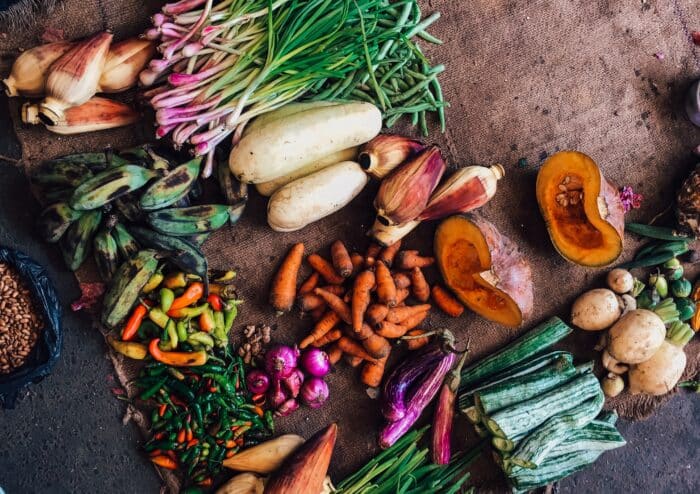
Restons optimistes…
La bonne nouvelle est que la majorité des canadiens et canadiennes sont motivés.es à agir contre ce fléau et à changer leurs habitudes alimentaires pour une consommation plus responsable. J’aime manger, pas gaspiller Canada a d’ailleurs mené une enquête en 2020 auprès de 1 200 Canadiennes et Canadiens et 94% se disent motivés.es à diminuer le gaspillage alimentaire dans leur foyer. Mais comment faire pour sauver ces bananes qui traînent sur le comptoir depuis des jours ou ces légumes qui approchent de leur pleine maturité?
3 stratégies pour consommer plus consciemment
1- Planifie tes repas
Es-tu le genre de personne qui fait son épicerie à l’improviste? Si c’est le cas, tu peux commencer par faire ta liste d’épicerie selon les ingrédients manquants dans ton frigo et garde-manger afin de limiter les achats inutiles. Et si tu veux devenir un.e pro de l’organisation, tu peux aussi planifier les repas de la semaine. Il suffit de prévoir approximativement les recettes que tu aimerais préparer avant de faire tes courses. Cette étape te permettra non seulement de limiter le gaspillage alimentaire, mais aussi de faire des économies.

2- Le frigo, ton meilleur allié
On ne t’apprend rien, pour conserver tes repas, il faut les garder au frais! Fruits, légumes, restes et produits laitiers, il est important de mettre chaque ingrédient dans le bon compartiment afin d’optimiser sa conservation et éviter qu’il finisse dans les poubelles.
Comme le montre l’illustration de J’aime manger, pas gaspiller Canada, sauvegarder ses aliments dans le congélateur est tout un art!
Tu peux même mettre des repas précuits au congélateur pour les sortir dans tes journées de grand rush.
3- Teste de nouvelles recettes
Limiter le gaspillage alimentaire ne rime pas uniquement avec planification de repas. Tu peux aussi t’amuser à tester de nouvelles recettes avec des fruits et légumes trop mûrs. Banana bread, gâteaux aux carottes ou encore pain aux courgettes, plein de recettes créatives et délicieuses te permettront de sauver ton surplus de fruits et légumes.
Alors? Penses-tu encore que le zéro-gaspillage est compliqué? Comme tu peux le constater, tout est une question d’organisation et de créativité!
Et d’ailleurs, si nos saucisses Gusta finissent dans ton frigo, il y a de fortes chances que tu les dévores en une seule fois (impossible de résister à nos produits riches en saveurs et en bons nutriments). Cependant, nous tenons à te rappeler qu’une fois l’emballage ouvert et mis dans une boîte hermétique, leur durée de conservation peut aller jusqu’à 10 jours. Si tu es à la recherche d’idées de recettes savoureuses à base de nos fameuses saucisses, dirige-toi vers notre section Recettes+.
Après avoir adopté une alimentation végane, plusieurs athlètes de haut niveau prouvent que la viande ou les produits laitiers ne sont pas nécessaires pour bien performer. Par le fait même, ils défient tous les mythes sur le véganisme. En effet, une étude du Journal of the International Society of Sports mentionne que le régime végane est riche en glucides, en fibres et en plusieurs autres nutriments. Les athlètes véganes bénéficient donc de tout le nécessaire pour pouvoir continuer à battre tous les records, peu importe la discipline !
Voici 9 athlètes végétaliens qui puisent toute leur énergie dans les plantes.
Meagan Duhamel
Après avoir lu un livre sur le véganisme en 2008, cette athlète de patinage artistique s’est tournée vers le végétalisme. Depuis, elle a remporté de nombreux titres prestigieux, dont la médaille d’or aux Championnats du monde de l’ISU en 2015 et en 2016, et aux Jeux olympiques de Sotchi en 2018. Elle mentionne que sa diète l’aide à rester focus sur la glace, à avoir plus d’énergie et à améliorer ses performances.

Morgan Mitchell
L’athlète olympienne de course, Morgan Mitchell, n’a plus besoin de présentation depuis les Jeux olympiques de 2016 à Rio de Janeiro. Elle y avait atteint la 7e position à l’épreuve des 4 x 400 mètres. Mitchell a adopté le régime végétalien en 2014 pour augmenter son niveau d’énergie. Elle a d’ailleurs fait une apparition dans le célèbre documentaire The Game Changers, dans lequel elle prône ce style d’alimentation.
Patrik Baboumian
L’un des hommes les plus forts de la planète donne tort à tous ceux qui clament qu’il faut manger de la viande pour bâtir une grande masse musculaire. Végane depuis 2011, il a remporté deux records Guinness en 2012 et deux records du monde en 2013. Il a d’ailleurs écrit un livre en 2015 sur sa transition alimentaire. VRebellion-1 : How to Become a Vegan Badass démontre tous les bénéfices que lui ont apportés le véganisme.
Lewis Hamilton
Depuis 2017, ce pilote automobile britannique ne jure que par une alimentation à base de plantes. L’athlète, qui a été couronné champion du monde de F1 à maintes reprises et qui possède de nombreux records dans le sport, utilise son image pour promouvoir les bienfaits du véganisme. Il a également initié son chien Roscoe à la diète végétalienne ! Hamilton mentionne que cela a grandement aidé l’animal à améliorer son état de santé.

Scott Jurek
Ultramarathonien végane, Scott Jurek défie tous les préjugés à propos du véganisme. Cet athlète, qui est une icône dans le monde de la course, a remporté plusieurs titres. Pour ne nommer qu’une seule réalisation, il détient le record des États-Unis dans la course de 24 heures. Il y a couru 165,7 miles (266,7 kilomètres), ce qui équivaut à 6,5 marathons. Et tout ça, en étant végane ! Il crédite le véganisme pour ses victoires, son endurance et sa capacité à récupérer rapidement après l’entraînement.
Kendrick Farris
Un haltérophile végane? Et oui! Depuis 2014, Kendrick Farris s’entraîne très fort et ne se nourrit que de plantes. Il participe aux Jeux olympiques depuis 2008, où il fait bonne figure en se maintenant dans le top 12 mondial. Il détient d’ailleurs le record américain depuis qu’il a soulevé un poids de 377 kg dans sa division. À tous ceux qui disent qu’il est impossible de manger suffisamment de protéines lorsqu’on est végane, il répond simplement qu’il est la preuve vivante que c’est tout le contraire!
Georges Laraque
Ce grand joueur de hockey québécois a fait partie de quelques équipes de la Ligue nationale de hockey depuis le début de sa carrière, en 1997. Il est retraité depuis 2010, mais continue de faire du sport amateur. Il a changé le cap vers une alimentation à base de plantes en 2009 et depuis, il parle de cette modification à son style de vie partout dans les médias. Il prône un effet positif sur sa santé globale, en plus d’une augmentation de son énergie et de son endurance.
Venus Williams
La célèbre athlète de tennis est devenue végétalienne après avoir été diagnostiquée avec le syndrome de Sjögren, une maladie auto-immune, en 2011. Suite à sa descente drastique aux classements, ce changement de diète lui a permis de remonter au top au fil des années. En plus de réduire l’inflammation causée par sa maladie, l’alimentation végane lui a donné la force et l’énergie de continuer sa carrière d’athlète. Elle a d’ailleurs récemment lancé sa propre marque de protéine végane, Happy Viking.

Kyrie Irving
L’un des joueurs vedettes de la National Basketball League, Kyrie Irving, est végane depuis 2017. Alors qu’il jouait pour les Celtics de Boston, il a décidé de modifier son alimentation. Cette année-là, il a d’ailleurs crédité les 13 victoires consécutives de son équipe à son changement de diète. Il insiste sur le fait que son alimentation végétalienne l’a aidé à devenir un meilleur athlète, en lui fournissant plus d’énergie et une plus grande habileté à récupérer.

C’est grâce à des sportifs et des célébrités comme celles-ci, qui ne se gênent pas de publiciser les bienfaits de l’alimentation végane, qu’elle prend de plus en plus d’expansion à travers le monde. Ces athlètes prouvent, une fois de plus, que se nourrir de plantes ne peut apporter que du positif!
Les produits GUSTA t’aideront à puiser toute l’énergie nécessaire pour devenir un grand athlète!